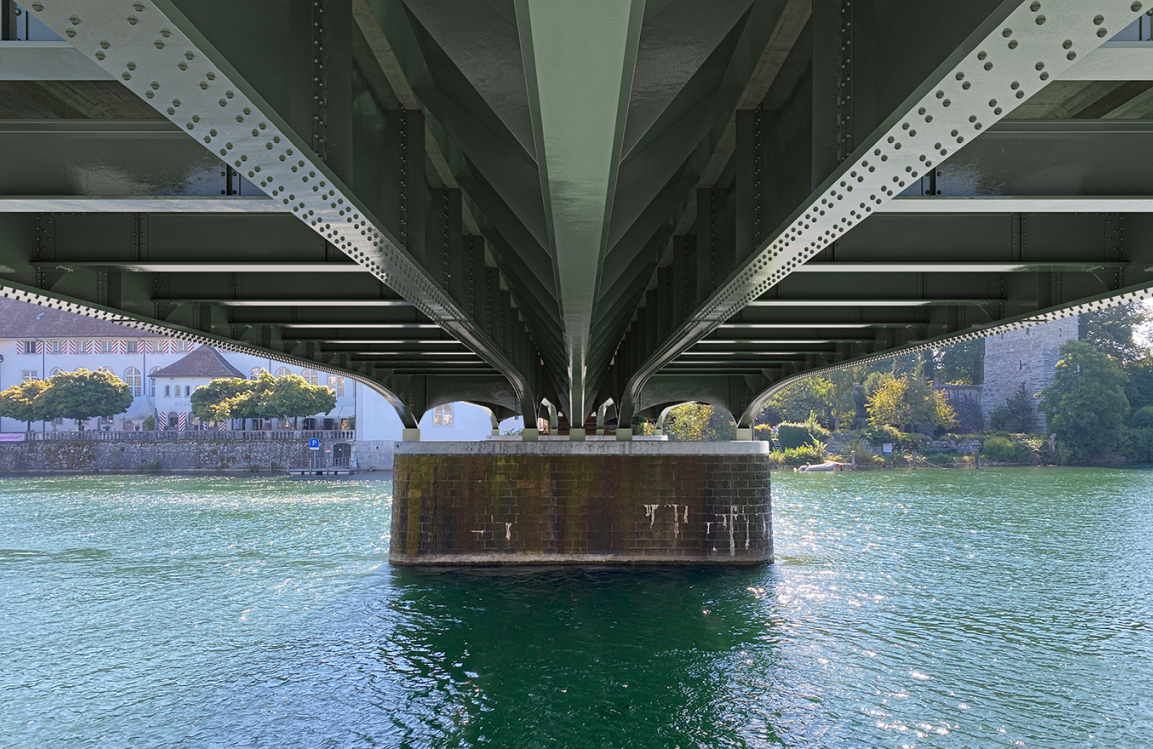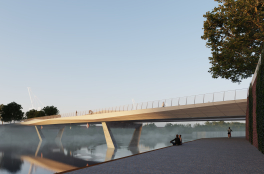



Railway Bridge in Solothurn, Switzerland
Gottlieb Paludan Architects has designed a proposal for the modernisation of a listed railway bridge over the river Aare in the historic baroque town of Solothurn in Switzerland. The proposal, which was awarded second prize in an international design competition, was developed in collaboration with Swiss engineering firms WaltGalmarini and EquiBridge and is characterised by an uncompromising approach to minimising material consumption.
The aim of the design competition was to future-proof the railway link across the River Aare, as the bridge in its current form would not be adaptable to a major technical upgrade of the railway corridor. The client, SBB Schweizerische Bundes Bahnen, received an exemption to replace the listed bridge, which is part of the Solothurn-Biel railway line, one of the most important traffic arteries of the Swiss railway network. The competition programme did not specify whether the existing bridge was to have its service life extended or whether a new bridge was to be built.
Gottlieb Paludan Architects' design work started with an analysis of the bridge's historical and cultural value. As we wanted to minimise the project's resource consumption and environmental impact, we chose to try to reuse as much of the existing structure as possible.
By utilising the possibilities of the latest developments in material technology, we propose a solution that preserves the majority of the existing bridge in its original state while meeting the client’s future functional requirements. The proposal is based on the interaction between a new ultra-high performance fibre reinforced concrete (UHPC) ballast trough and the existing riveted steel twin bridge girders.
Our proposal allows the railway to remain in service during construction. The existing bridge girders will be lowered and reinforced with UHPFR concrete. This increases the structural height of the bridge’s superstructure and the new bridge acts as a composite and better distributes the load. This significantly reduces the fatigue-related stress amplitudes from traffic, which benefits the bridge's service life.
The proposal shows that it is possible to extend the lifespan of our existing infrastructure if we are willing to utilise the latest developments in material technology.












